Georges Rouquier on Farrebique
I developed a boundless admiration for the work of Georges Rouquier very early on. It started at the end of the 1950s, at the film club at the Lycée Henri IV. They projected Farrebique from a crumbling 16mm copy whose disastrous state in no way effaced the dazzling discovery. Shortly after, at Studio Parnasse, the extremely rare SOS Noronha was shown, a rare pearl of the sad postwar and pre-Nouvelle Vague French cinema.
The fact that he had also made a portrait of Arthur Honegger shortly before the great composer’s death only kindled my interest in this multitalented filmmaker, gifted with a great narrator’s voice, which we are able to enjoy in both Chris Marker’s Letter fom Siberia and the first short film by his assistant Jacques Demy, Le sabotier du Val de Loire.
After I met Georges Rouquier in the early 1970s through a professional chance encounter, I first called on his talent as a narrator to record the texts for my film Elie Faure ou l’esprit des formes.
The following documents testify to our friendship. In the autumn of 1984, Georges Rouquier expressed the desire to put together a book of interviews titled De Farrebique à Biquefarre. In the introduction to the book, he also wanted to provide a broad overview of the controversy that Farrebique had unleashed in the press when it was released, described by some as a “new battle of Hernani”. Rouquier entrusted me with the two enormous volumes of the film’s press book so I could extract the synthesis that can be read below. Parallel to this work, we recorded interviews, two per month until the spring of 1985 (the transcripts of these interviews haven’t been used before).
So it seemed appropriate to publish extracts from these interviews just before the filmmaker’s centenary and the twentieth anniversary of his death. The selection of Georges Rouquier’s comments mainly focuses on Farrebique, forming a kind of diptych in relation to the journalistic dossier “L’accueil de Farrebique, reflets d’une polemique” [“The Reception of Farrebique: Reflections on a Polemic”].
François Porcile
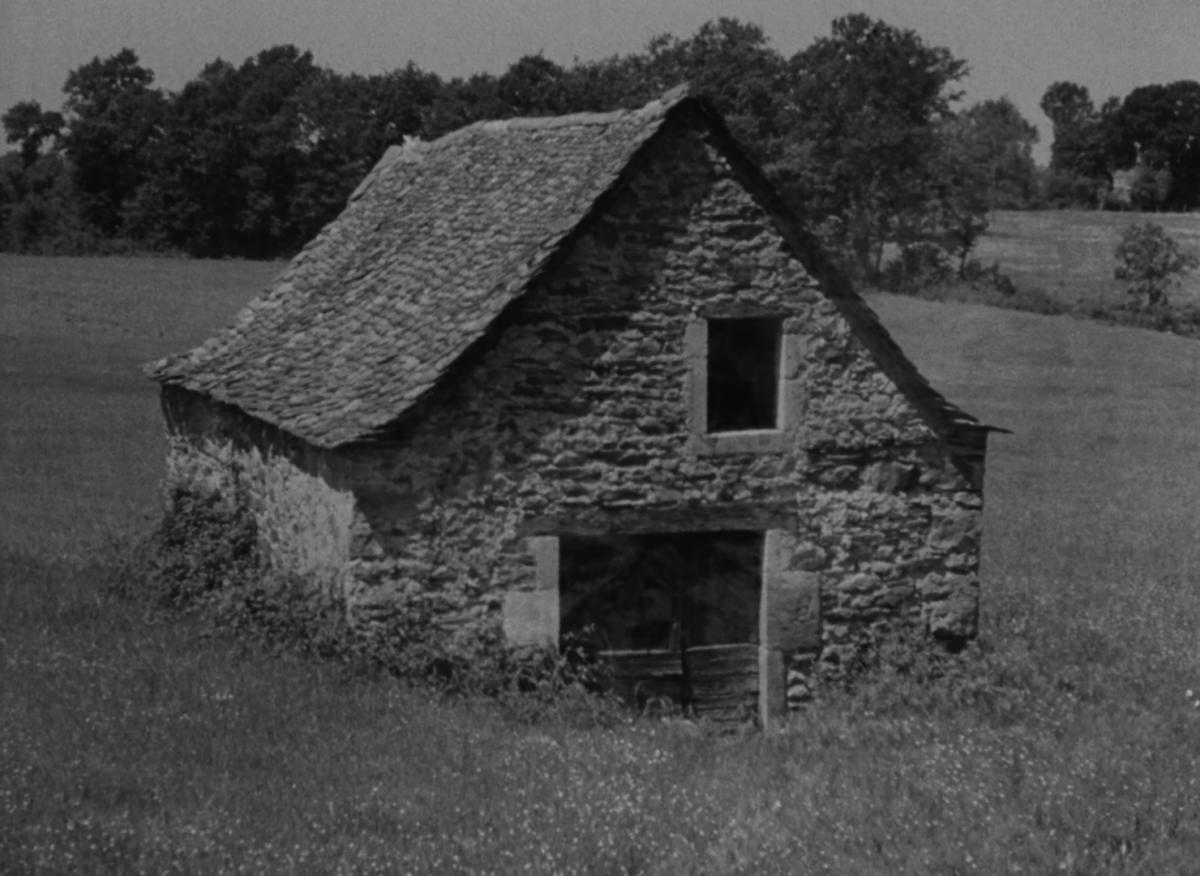 Georges Rouquier: It happened in 1951, in a small German town called Schlursee. Chris Marker was there, we were in the middle of a screening. All of a sudden we were told, “Flaherty’s here!” We went outside. We welcomed Robert Flaherty as he got out of the car. Handshakes, introductions, congratulations. Then Chris said to Flaherty, “This is Rouquier.” “Oh! Rouquier! I’ve seen Farrebique five times!” he said (in English, it was translated to me afterwards) and stretched out his hand, with his five fingers spread wide.
Georges Rouquier: It happened in 1951, in a small German town called Schlursee. Chris Marker was there, we were in the middle of a screening. All of a sudden we were told, “Flaherty’s here!” We went outside. We welcomed Robert Flaherty as he got out of the car. Handshakes, introductions, congratulations. Then Chris said to Flaherty, “This is Rouquier.” “Oh! Rouquier! I’ve seen Farrebique five times!” he said (in English, it was translated to me afterwards) and stretched out his hand, with his five fingers spread wide.
It was quite extraordinary for a kid like me, especially because the film that had struck me the most was Nanook of the North, which I had seen in 1922, when I was just thirteen.
François Porcile: The war wasn’t over yet when you started filming Farrebique...
We started filming on 11 January 1945. We filmed five snow shots that day. And we filmed off the top of our heads, in the sense that I had no script in the beginning, which infuriated the production manager, Jacques Girard. When I came home from work in the evening, I continued working in my room until two or three in the morning, in the terrible cold, a miserable heater at my feet, gradually drawing up the découpage. Since the filming had started in winter, I started in winter. There were four of us: the cinematographer André A. Dantan, his assistant Jean-Jacques Rebuffat, the production manager and handyman Jacques Girard, and me. We did everything. We didn’t have lighting technicians or grips. In the beginning, we filmed outside shots – an abandoned plough in the snow, bird’s steps on the snow, things like that. It was stupid to film without having put the film together on paper – I hate that. While filming these things, I finished my script. I can’t remember, but I must have had about 1,400 shots... Totally crazy! It’s true that I am – as you may have noticed – a “short” editor. It’s in my nature, there’s nothing I can do about it. It’s just the way it is. I can’t explain it any other way. I don’t know how he does it, but Franju uses these long shots... I don’t know how he manages. But me, I have so many things to say that I need short shots, otherwise I can’t say them. For example, you see, you waste a lot of time on tracking shots. I film twenty shots during that time. Instead of setting up a tracking shot, I do twenty shots. Twenty emotionally or even sentimentally charged shots, an image that is much more important than a tracking shot. That’s the thing, it’s important.
So, once the script was ready, everything was harmonized. Every day, I saw Jacques Girard going through the découpage with a fine-tooth comb, marking and calculating. It annoyed me a little, but the poor man had to manage things! The cash, you know! Normally it would have been a cheap film, but it cost a lot because the filming lasted a year, the four of us plus a sound engineer sometimes.
Does this mean that you had to group together the filming of all the synchronous-sound sequences?
What else could we do? It was always a terrible headache. The sound engineer arrived on 6 February. And we still had no electricity. We had some projectors stacked in a corner somewhere, but no electricity. We were eventually able to get ahold of a transformer, which we dragged all the way up to Farrebique on an ox cart, and we finished the installation the day before the sound engineer and his equipment were supposed to arrive. I was going grey over it, you know.
People ask me: “Why Farrebique?” It’s important to understand why I proposed it. The first time my parents took me to Farrebique, I was three. That was 1912. When my father died in January of 1915, I went back. My mother sent me. I stayed there for at least six months. I went back later. My mother told me: “You should go and say hello to them, go and see them.” I took the train. I had to change trains three times to cover the 200 kilometres from Montpellier to Rodez. When I arrived, I was given a wonderful welcome. Because I was the son of Albert, the one who had died in Verdun.
While filming Le tonnelier, in December 1941, the producer, Etienne Lallier, suggested I make a feature-length film on the four seasons, based on an idea by the great reporter Claude Blanchard. You realize that for a guy making short films, being offered a first feature-length film is extraordinary, right? It was quite a unique encounter, between Lallier and me, at that time. It’s a bit like Napoleon – if he’d been born three years earlier or later, it wouldn’t have worked. It’s more or less the same for me. What other producer could have offered me all these advantages: you go there, you film for a year, you make a poetic film... It’s extraordinary, isn’t it?
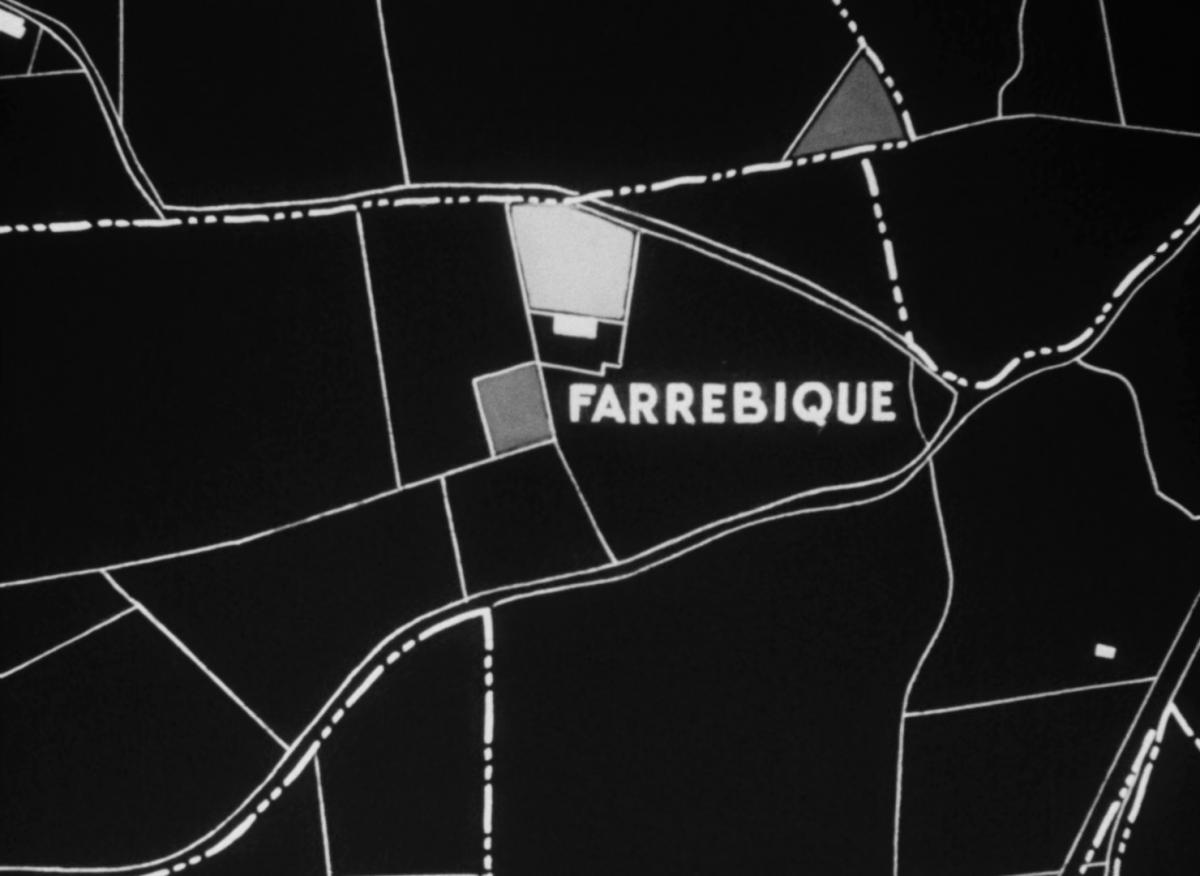
But this project had nothing to do with your family at the outset...
Nothing at all! It was just an idea floating around. And I immediately thought: it’s very beautiful, four poetic sequences on autumn, winter, spring, and summer, but it has to be very strong to be able to pull it off, you need some humanity, a story, with peasants. That’s when I started talking about Farrebique. Lallier wasn’t pleased: “Oh, the Aveyron, it’s not picturesque, and so on.” I told him: “You absolutely must come and have a look. If you don’t like it, fine, we’ll look elsewhere.” I left in advance and warned the family. Lallier arrived on a Sunday, and of course the family had prepared a big meal. Berthe brought in the soup tureen with the ladle and put it in the middle of the table. Then, the grandfather stood up, took the ladle and said: “Monsieur Lallier, would you do us the honour of serving us?” I was blown away! Blown away! And then we spoke, and LaIlier left happy.
I knew we couldn’t film with people we didn’t know, especially when they’re not actors. If you start just like that, without knowing the people, it takes six months to a year before being accepted as a friend, before they feel at ease, you know. But in this case, a lot of the psychological work had already been done, because they had known me since I was a child. So no problems there. All that remained was, of course, to convince them to make a film, and that was something else entirely. I tried to explain cinema to them. Well, that was a waste of time. They had all gone to the photographer – look at the birdie, say cheese, a family portrait, done. But no cinema whatsoever, except Roch, who told me:
- Ah, I watched a film once.
- Oh really, where?
- In Montpellier, one day at the barracks they took us to see a film about venereal diseases.
That was it, the family’s entire film culture! I already knew that you can’t just make a film overnight with people who aren’t actors. Especially when you want to make a feature film. And there I was, plunging into a spoken feature-length film. Some friends had told me, “Be careful!” I responded, “Damn it! Flaherty made Nanook, and he made Moana!” “Ah yes, okay, but that’s silent film! You, your peasants, when they open their mouths, you’ll see, it’ll be a catastrophe.” I hung on all the same. Of course, you can’t make them play Le Cid or Hamlet... You have to make them play something that’s closer to their hearts.
I didn’t want them to read the story in advance, not because I didn’t want them to read the story – I didn’t care – but because I didn’t want them to learn the text by heart. I made sure the lines weren’t too long. For every take, I told them: “You’re here and that’s what you say.” And that’s how it worked. We gave them short sentences, and when I had to use longer sentences, I proceeded as follows: I filmed the beginning of the sentence in direct sound, immediately after I would record just the sound of the middle of the sentence, and right after that I filmed the end of the sentence in direct sound. When you glued the three segments together, you had a longer sentence. That’s how I filmed the grandfather’s wake. There’s only one completely improvised scene in Farrebique, when the estate is divided. I don’t even think that there is a written dialogue. Quite surprisingly, the real division of the estate occurred after the film, and it occurred in the exact same way.
I had started with an idea that fit with what I knew of Farrebique – there was a lot of talk in those days about the modernization of the rural habitat. And when you watch the film Farrebique, you understand. You see the lack of comfort. It’s like life in the Middle Ages really.
It’s a mole’s life, as Berthe says.
A mole’s life indeed. It’s not for nothing that at the wake, I added a shot of the door with a wisp of straw to show the wind blowing underneath. As they used to say, you get burned in front of it and you freeze behind it.
I thought, that’s interesting, this modernization of the rural habitat, it could be nice...
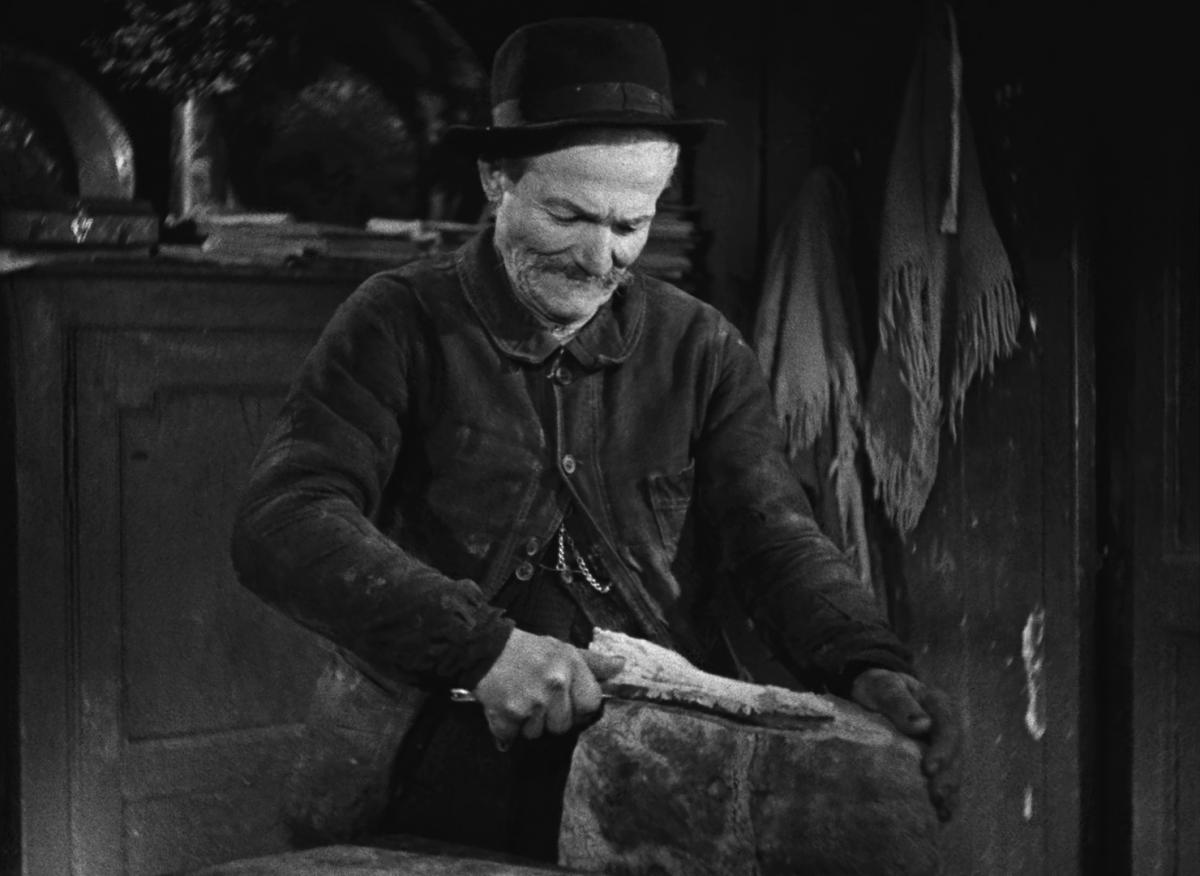
At the same time, you’ve been criticized for describing a timeless peasantry.
I know they said that, but I don’t care! It was timeless because I had added as many childhood memories as I could, memories that were close to my heart. Raymondou looking after the cows, the little mill turning in the water, the cane he’s sculpting, Raymondou imitating the cow that runs her tongue over her muzzle, it’s all me! And there was something else: since the film was supposed to cover the four seasons, it was necessary to describe nature’s metamorphosis. One idea that had been going through my mind for a long time – especially for a subject like this – was to use scientific shots as poetic or dramatic elements. I had drawn up a flower calendar, and I had arranged my special cameraman, Daniel Sarrade, to film frame-by-frame shots together with the chief gardener of the Jardin des Plantes, to film the different phases of flowers blooming. He got some extraordinarily sexual shots. For example, I had a magnificent shot of an iris. In the beginning, it’s a sort of purplish cigar with a pointed top and a narrower aerodynamic shape at the bottom; as it grows, it turns like a propeller until it becomes a huge thing, and then suddenly, poof, it explodes, opening up everything. So I wanted to play on that! I had the image of the stallion with the mare, and I edited the growing iris in parallel. The stallion approaches the mare and bites her, and then the thing opens. They had me remove it! Jacqueline Jacoupy (the coproducer) couldn’t stand it. I had to take it out. At that time, it wasn’t like it is now! It was 1946, and we had to cut the swelling cigar. It was beautiful though. Damn!
They let you keep the shots of the potatoes sprouting though...
Luckily, shit! I would have gone berserk!
In Farrebique there’s first of all the influence of Chaplin. And also Flaherty. It may seem odd to compare Flaherty and Chaplin, but for me they follow the same principle, the rigour of the construction of the fixed shot. And then there’s the influence of the Russians, Eisenstein of course, The General Line, but especially Dovjenko. The funeral in Farrebique was directly inspired on Dovjenko – the open coffin, the tree branches with the apples passing over the dead man’s face... I loved it. But my funeral sequence has to do with Chaplin too. God knows if they told me about brambles clinging to the car, but I kept it in the shot! It may have taken me thirty years of my life to discover what was going on in Chaplin’s films; it was impossible, there had to be something! For years I replayed his films in my head, and one day it hit me. I suddenly realized that some shots had been filmed backwards, and nobody had ever noticed.
Albert Dubout, the cartoonist, happened to be my first cousin. And Dubout’s world was originally the world of Chaplin without Charlot, when he started in 1923. And little by little it became his own world. When I discovered The Fireman’s reversed shots, I rushed to his place to describe the trick. Charlot, chased by an enormous fireman, grabs the sliding pole of the fire station’s dormitory to get away and climbs the pole on his own without the slightest effort. All of a sudden, I thought, “Damn, this shot’s been reversed.” It’s filmed in reverse, but you can’t tell. That’s the trick, you see. You have to be careful not to show your face. He filmed it in 1916, and this is what I imagine happening: he had the idea of reversing it, but when he saw the rushes he realized it didn’t work. So he thought about it and said, “I’m a fool. I’m going to film it again, but this time I’m going to overdo my arms as if I were really climbing.” So that’s what he did, and it works.
There’s another reversed shot in The Fireman, when there’s a fire. The alarm is raised, the horses have to be harnessed to leave by carriage. As a good peasant, I know what it means to put two horses on each side of a beam or one horse on a shaft. It’s a terrible mess. Chaplin didn’t bother; he put the beam on the ground and backed up his horses. He had to find the trick to speed up the action. Regular harnessing would have resulted in dreadful dead time. It reminds me of a story by Jacques Becker. We were both editing at the Saint Maurice studios – I can’t remember what exactly – and one day I find him in front of his editing room all happy. And he said: “I have a guy in a corridor who pushes a door to enter a room. We cut to the room, and thus manage to take out two steps without it showing.” It’s not the two steps you take out that count, but the dead time.
The third trick I discovered in The Fireman is the use of fast motion. The annoying thing about fast motion is that you often notice it’s accelerated. You shouldn’t notice. So what he imagined, and what I thought I had figured out on my own before, was to put someone in a corner of the image in slow motion. That’s exactly what he did. We see a roadworker digging and a car passing in front of him at breakneck speed.
These are the three lessons of The Fireman. Let me now return to the grandfather’s hearse in Farrebique: I thought it would be interesting to wrap the brambles around the wheel, back up slowly and reverse it. But it didn’t work, you see, the brambles seemed to rush ahead on the wheel, we didn’t understand why. How shall I put it? The trick was showing. But Chaplin’s great lesson was never to show the trick, never to show your face! And now that we’re talking about Chaplin, we’re going to continue. There’s a shot in the film that was talked about a lot, that of the cow dropping dung. I wanted to film that, not to be rude, but to give an idea of the smell when you enter the stable. But if you only see an image of a cow dropping dung, it’s because the director wanted to show that, whereas it would have been easy to film a slightly wider shot and film both the cow defecating and Roch entering the stable with his bucket and his little stool to milk the cow. Then you understand that Rouquier has revealed himself to be a fool, an absolute fool. I still blame myself forty years later.
We were filming in silence with a camera I liked a lot, the 120 Caméréclair – I had already used it for Le tonnelier. It’s a heavy bastard, but it has an advantage over the Debrie, with which I had filmed Le Charron, and which is equipped with fixed bayonet lenses. The Caméréclair lenses, however, are mounted on a sort of iron tube, split on the side, with a clamping ring, and by slightly moving them you have a whole range of different focal lengths at your disposal. So for me, as someone who loves close-ups, who wants a lot of close-ups, it was a treat.
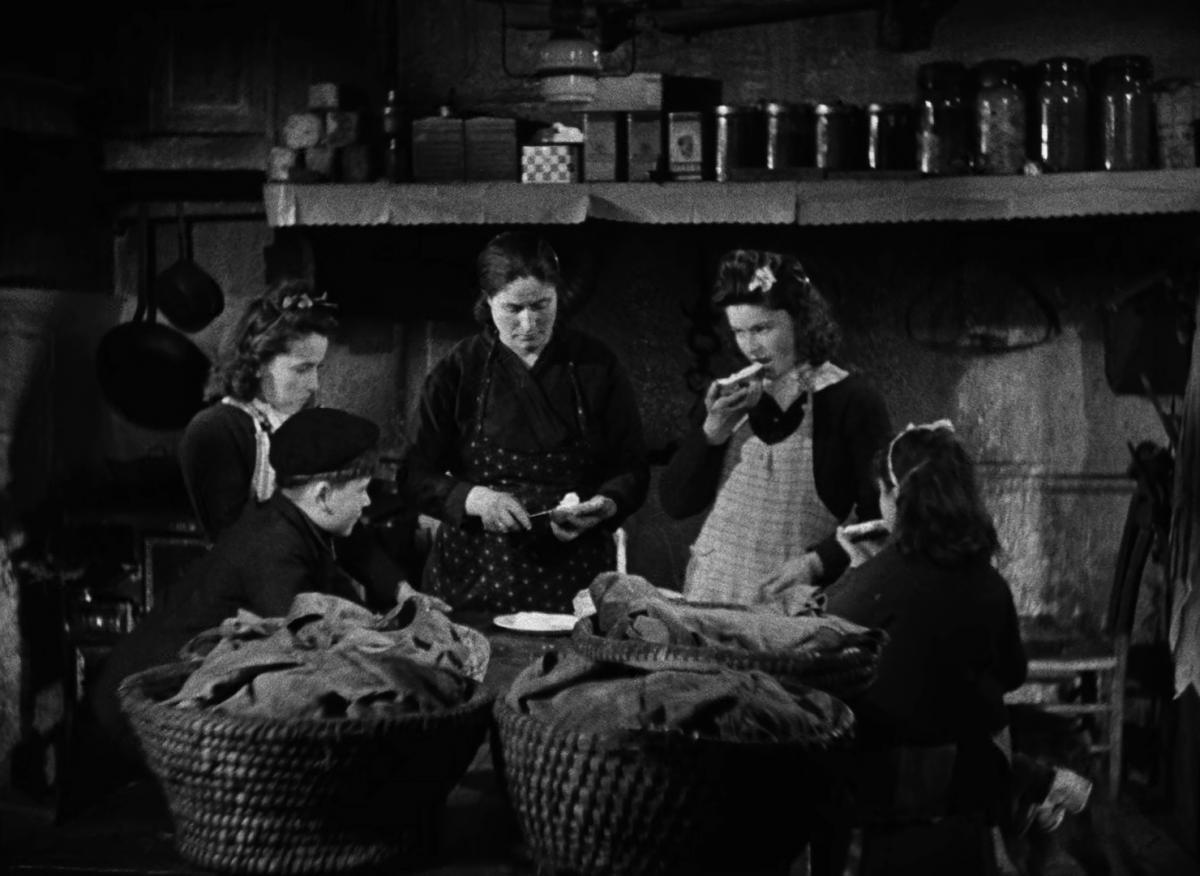
Every time I watch Farrebique, one of the things that fascinates me the most is the richness and precision of the sound.
We sometimes clashed on the sound, for example during the filming of the bread kneading. Roch did it with his clogs on, on beams under which there was an empty space. It made an infernal racket. He refused to film without his clogs. I told him: “This is bloody impossible.” And he insisted: “I can’t do it any other way.” He was right, by the way, but sometimes you have to alter the truth, there’s nothing you can do about it. Because the sound of the clogs would drown out everything, you know? First of all, the grunting when handling the dough, and then the soft sound of the dough being turned, which was actually kind of interesting. So we made Roch do his work while trampling on a bag...
But you’re right, the sound of Farrebique is extraordinary. This is thanks to René Lécuyer, the sound engineer. Against the tradition of the time of assembling a maximum of sounds on a minimum of tracks in order to reduce the background noise in the mix, I multiplied the tracks, to six or seven if I remember correctly. After two or three reels, the sound mixer said a wonderful thing to me: “You would make me love cinema.” He meant that he was fed up with the artificial sound effects and rough makeshift sound of cinema at the time. Regarding makeshift sound, I think of the recording of the commentary in Le tonnelier. While I was reading the text, we played the music, mixing everything on the spot. There is no separate recording of the commentary of Le tonnelier!
I was sensitive to all the noises. For example, at dusk during haymaking time, when you hear the loading of the carts and suddenly the evening bells ring in the distance, I wanted to have that sound recorded from afar, if you know what I mean; the rattling of the axles, those noises I have known since I was a child, the big wheels of the carts rattling on the dirt roads, knocking about... I wanted all those sounds, and the toads and the owls. I was like a madman, but you see, for me a film soundtrack is a kind of harmony.
Toads, owls, and the famous cricket.
We had so much trouble getting that! During the montage, people in the corridor could of course hear all the sounds we were using, including the famous chirping of the cricket. The editor in the next room came over one day pleading to lend her our cricket, so she could copy it. You know what she was editing? The Battle of the Rails! The chirping cricket you hear at the end of the derailment sequence is the cricket of Farrebique!
I must say that the editing took a long time – nine months. With Madeleine Gug, who often worked with Claude Autant-Lara and with Max Ophuls on Lola Montes.
Didn’t she start editing during the shoot?
I wouldn’t have allowed that. I can’t stand it. I don’t want my films to be edited without me being there. I’m in the editing room every day, from morning till night.
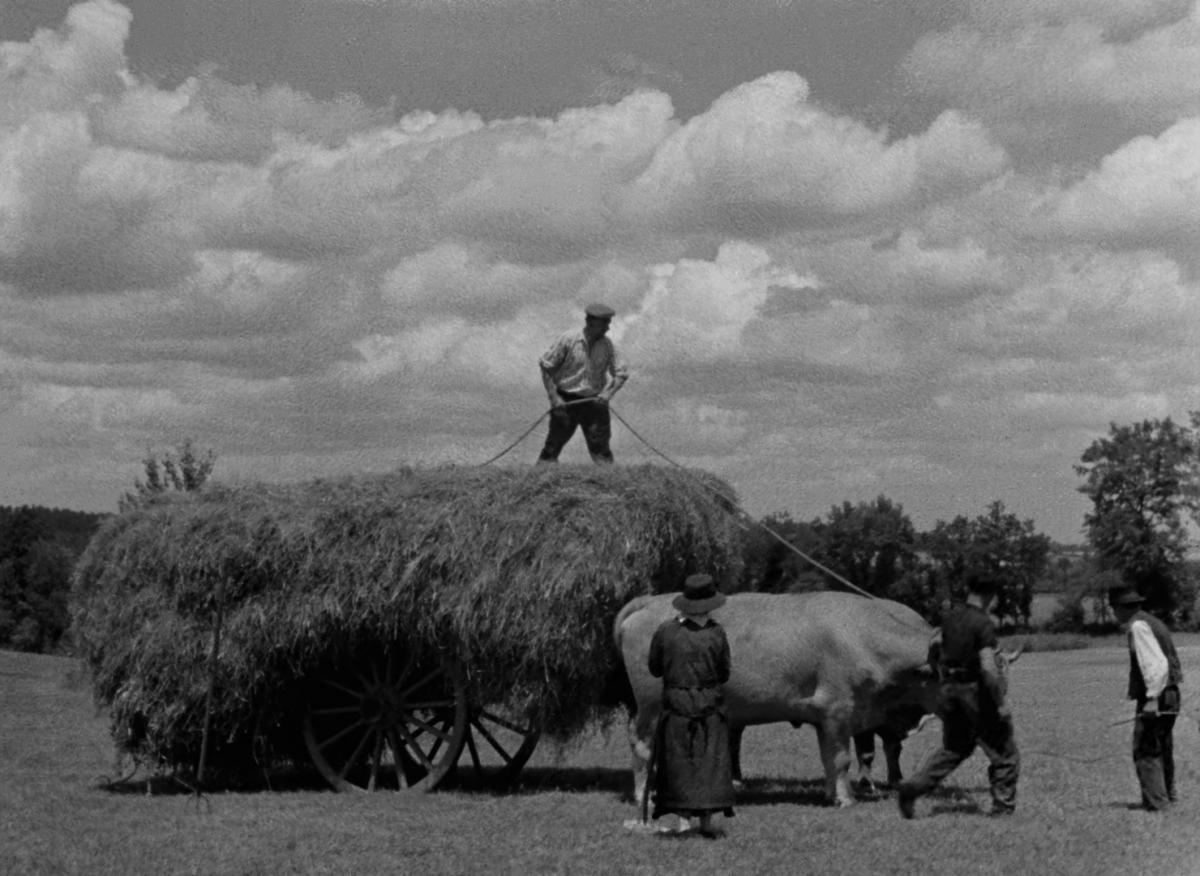
What was your approach? Season by season?
No, no, in order. That seemed the best way to proceed. It was a special kind of montage. I didn’t feel like cutting it up. We chose takes as we went along. There weren’t many double takes. Luckily, because when there happened to be a glitch and we had to resume the dialogue, it was terrible; everything fell apart and turned into bad theater.
I hesitated. We had to try everything. It was long and difficult, so much so that for nine months we kept on starting over. Every week, for nine months, we went back to the spring sequence. You edit, and all of a sudden you hit a snag! And you don’t find the solution. Or the available solutions don’t seem good. And then one day there’s an idea. For example, it was Madeleine Gug’s idea to place the shot of the wind-billowed linen just before Berthe giving birth. But the poor thing was on the verge of tears each time we rebegan a sequence from scratch. I was sorry. But, at the end she told me: “You still taught me a lot.” I don't know what I taught her, but I knew what I wanted.
In the meantime the montage was shown to the producers. They couldn’t wait to see the monster, the “bear” as they say. I flung a three-and-a-half-hour bear at them. On leaving the screening, Etienne Lallier said the following, which I think is wonderful: “One thing is certain, though: I knew this film had to be made.” This didn’t sound so bad!
And after that, it was a matter of reducing, reducing, reducing. It’s amazing how you can suffer when editing. But that’s where I learned to reduce; you know, you reduce by two, by six images here and there, left and right, and you get better, you gradually get better. And then the big day of recording the music finally arrived. Salle Gaveau, sixty musicians of the Orchestre de la Société des Concerts du Conservatoire, conducted by Roger Désormière, who had already conducted the recording of Henri Sauguet’s music for Le tonnelier. This is unthinkable today.
Afterwards, there were some screenings of the standard copy. One of the screenings took place at the Saint Maurice studio, to which Lallier had invited one of his fellow producers, whose name I have forgotten and who said at the end of the screening: “You won’t make a dime with this film.” Voilà.
The producer of Biquefarre, Bertrand van Effenterre, asked me: “Why on earth, Georges, are you so attached to truth?” The question took me by surprise, and I thought: the guy is crazy, I’m not going to tell him my life... Still, it bothered me, and it triggered some memories. I must have been no more than six years old. It was in Montpellier. I was playing in a gutter with a school friend. Mixing dirt with water from the gutter, we made mud and built a kind of enclosure that was supposed to be a garden. When it was finished, I said: we should add a “no entry” sign. So the friend, who was the son of a grocer, went to the shop to fetch a box made of poplar wood – of those Gervais cheese squares, if I remember correctly. He took the box apart to turn it into a kind of cross with letters on the horizontal part, saying: “Here is your sign.” I answered: “It doesn’t work. You have to put ‘no entry’.” He replied: “What does it matter? There are letters on it already.” I didn’t agree. It’s probably one of the first things I didn’t compromise on, and I was only six! Later, in the cinema, all the fake things bothered me: the weightless suitcases, the taxis arriving promptly after barely lifting your arm, the drivers never giving change, the half-formed phone numbers, etc. In cinema, you never blow your nose because it looks ugly, and the stars get to keep their perfect hairstyles even after a fight. Not to mention the actresses who play peasant women and invariably look like they’ve just come from the hairdresser! I couldn’t stand it.
Not even It Happened at the Inn [Goupi Mains Rouges]?
Well, no, of course I adore Goupi. It’s an entertaining film, but it doesn’t really satisfy me personally. Those guys aren’t peasants, they’re actors. And you’ll notice one thing: you never see them working. They live on love alone.
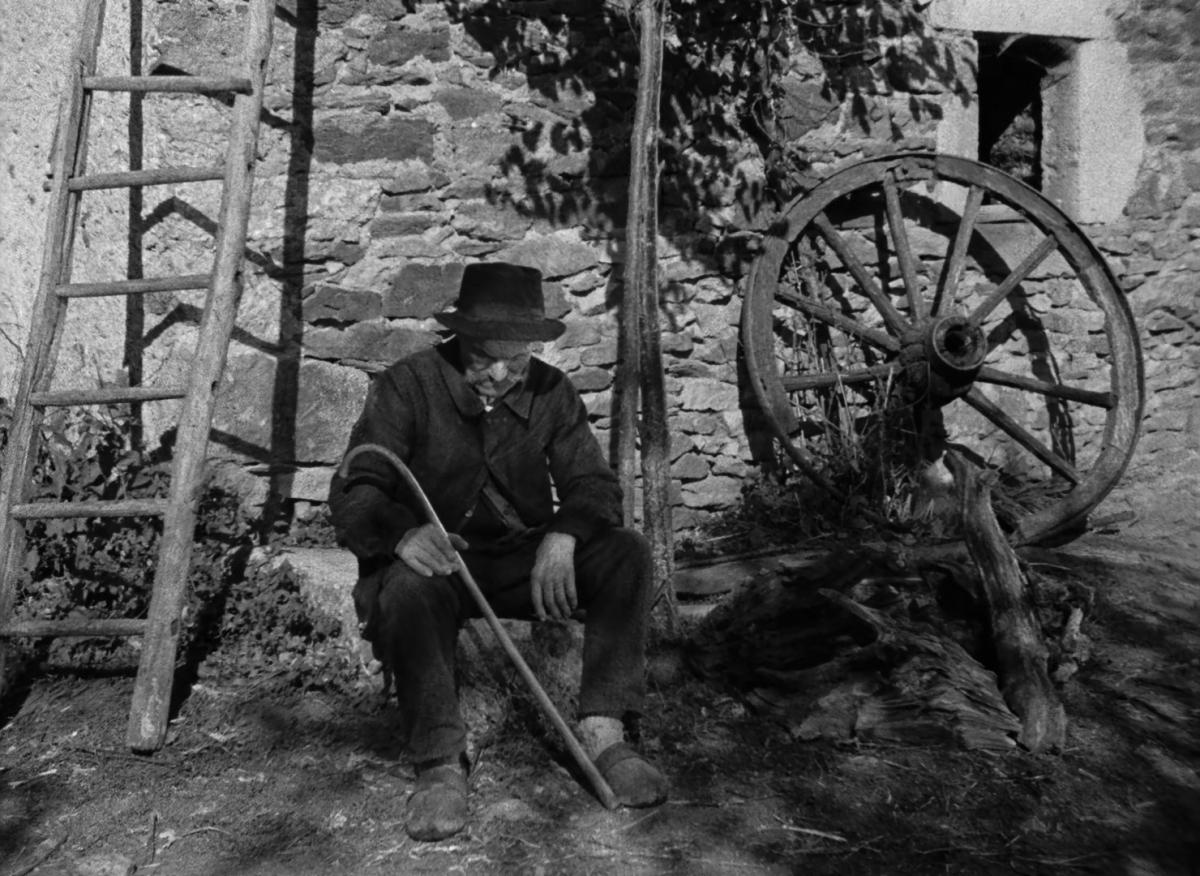
Was everything accurate when you recreated a radio station for SOS Noronha?
We pieced together a real transmitter from 1931, including electrical circuits and capacitors. I’m not saying that it would have been able to transmit, but it was credible. For me, there’s no other way. And it started with Le tonnelier, which is practically my first film. I told the guys: don’t shave. Like my uncle, who was a winemaker in Lunnel, they only shaved on Saturdays. It looked like their beard was scraping you, so I wanted my cooper [tonnelier] to wear the same three-day beard for the entire two-week shoot. I regularly took him to the hairdresser to keep his beard the same length. Why? Because for me it was true. Seeing guys play peasant roles, especially peasants from the old days, with Sunday beards is impossible. It doesn’t work. And if you add those fake gestures, the guys who don’t even know how to handle a pitchfork or hold a hammer... It’s unthinkable. But they tell you: “It doesn’t matter, it’s cinema.” Well, yes, of course it’s cinema. Which is exactly where the French expression “c’est du cinéma” [“it’s all an act”] comes from, meaning that it’s not true, that it’s fake. As for the films I made, Le tonnelier, Le charron, I couldn’t allow myself to do things that weren’t true. But there is also a “true cinema” that one arrives at through artifice, or even “tricks”. Because I quickly realized that you don’t catch the truth by surprise in cinema; you recreate it. You suggest. In the storm scene in Farrebique, everything is artificial, except for one shot where we see the grandmother running under a black sky, drops falling in puddles. Do you know how it was filmed? With a watering can, the spray head of a watering can in front of the camera. And the first raindrops at the start of the storm are filmed in slow motion, at eighty frames per second. It was done by means of a branch that we soaked in water. You’ll notice that during big thunderstorms, the first raindrops feel heavy, enormous. That’s what I wanted to convey. The lightning effect was created with a projector behind the room window which was switched on and immediately off. And for another flash of lightning, I took advantage of a defect in the Eclair cameras: when you stop filming, they slow down for about six frames. Depending on the timing, you end up with a completely blurred image. In this case, it was at the end of a shot of a tree against a black sky. That’s how I got my other flash.
As for the symbolic image of an apple tree in bloom in spring, the tree I had chosen to embody each season had no flowers whatsoever, whereas all the others were in bloom. I asked the grandfather: “How come it doesn’t have any flowers?” “This one had flowers last year, so I’m not sure whether it’ll have flowers this year.” “Couldn’t you have told me?!” I was furious. So I said: “I don’t want any fuss about it; we’ll put some flowers on it.” We took flowers from the other apple trees. It took about two hours to cover the tree. And there was my shot of an apple tree in spring! People say we’re faking it, but we’re not, really.
Like your S.O.S. Noronha transmitter – it’s not operational, but it’s plausible.
Exactly. We even had a radio specialist with us, who saved us from messing things up.
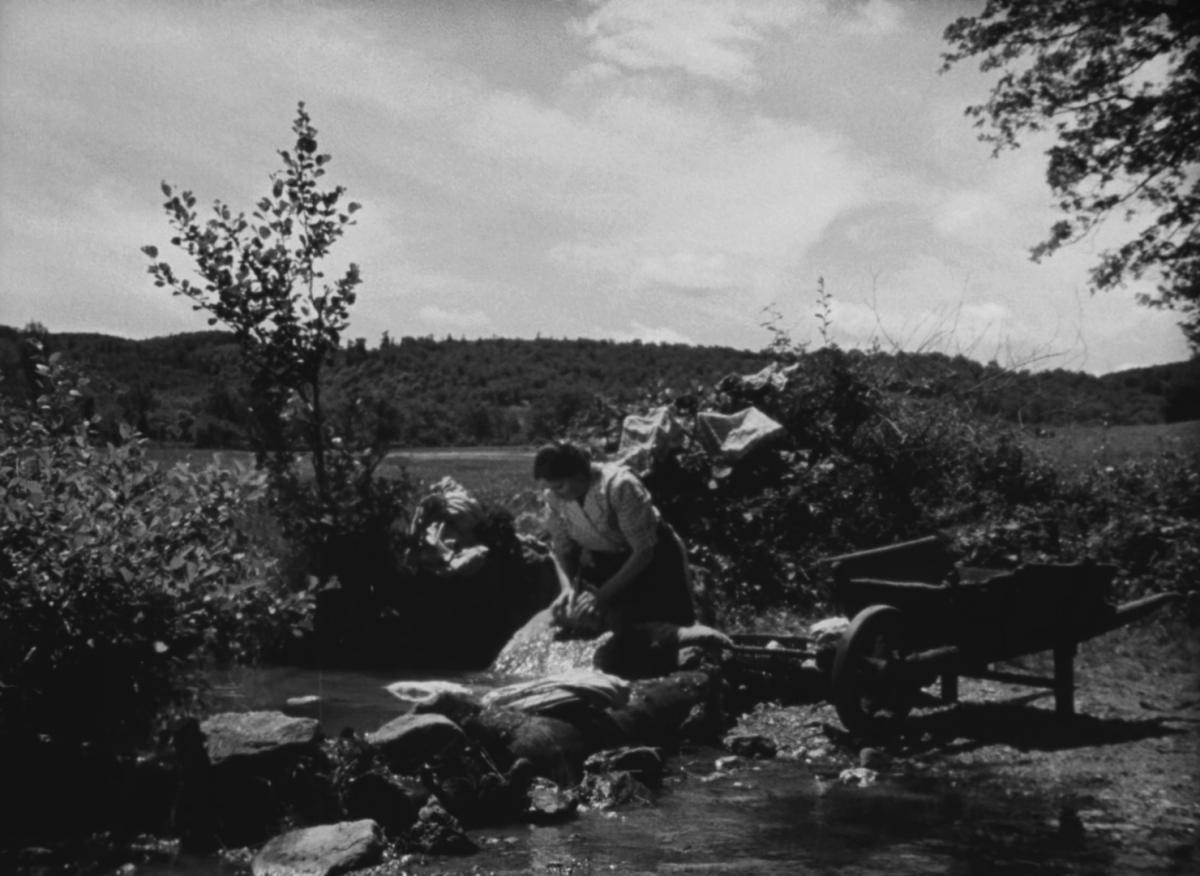
Regarding S.O.S. Noronha, I’ve always wondered why on earth you wanted to shoot it in colour. In 1956! A film that half takes place at night!
I have to say that I would have gladly shot it in black and white, but I was forced to film it in colour. But it led me to try some quite extraordinary things. I had asked Henri Decaë, the cinematographer, to make some tests: there was a lighthouse on the island, with a rotating beacon of course, but also with flashing lights and darkness between the flashes. I wanted it to be like that. I wanted darkness between the flashes. Imagine the discussions with the good woman in charge of the calibration at the GTC laboratory in Joinville: “But Mr. Rouquier... ” “I don’t care about the lighthouse flashes. On a moonless night with no gaslight or anything else, what do you see? Nothing. You see darkness, and I want it to be dark.” Right. At the beginning of the film, when Jean Marais discovers his murdered colleague, he takes an electric lamp, rushes outside to see if no other friends have paid the same price, and wakes everyone up. What happened was that the actors acted both among each other and with the light, thus forming their own set lighting. Their movements were combined in such a way that they illuminated each other.
I regret that we are not more rigorous with these kinds of imperatives. For example, all films set in the Middle Ages are false: their light is false, and their sound is false. They’re recreations, agreed, but you can’t hear the footsteps on the stone. And what did people use for lighting at the time? Apart from the sun penetrating the few thin openings and the torches or small oil lamps used at night.... If I had to make a film set in the Middle Ages, I would go about things in that way.
Little by little, I became aware of certain things. The meaning of the image is one of the most important things for me. As a child, I unavoidably witnessed the golden era of silent film, and I learned, unknowingly, to speak with images, to write with images. An image had to speak for itself.
Sometimes people say to me: “Oh, the photography in Farrebique is so beautiful!” It’s not that the photography is beautiful, it’s that each image is full of meaning. So, when you edit them, when you bump into the images all of a sudden, their meaning prevails over their cinematographic value. That’s kind of my style. That’s why people have said: “What beautiful photography!” Even though there are seven different brands of celluloid film, which I think is terrible!
Seven different emulsions?
Seven, indeed. We even used some “Lumière” film stock made in Lyon. I don’t know if you notice that! It was enough to make you rip your hair out! For certain shots, that was my greatest fear. Even so, people say: “What beautiful photography!” You bet! That’s important, the “beautiful photography”, in relation to what I know. It’s because each image is full of meaning, you know. And the quality of the photography, I would say, comes second. That’s what makes them say “beautiful photography”.
In its time, Farrebique was a kind of French neorealism.
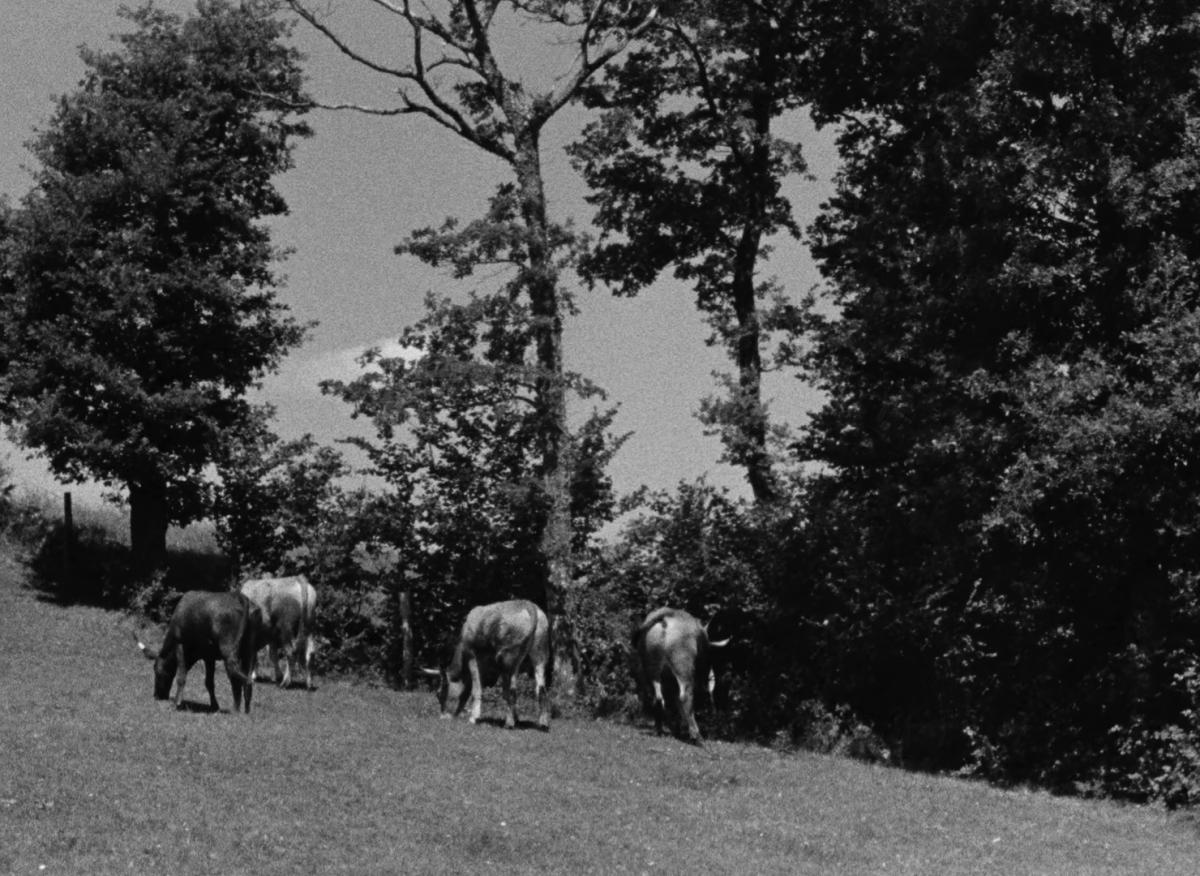 ... and it preceded Visconti’s The Earth Trembles by two years. Which makes me think that you paved a way there...
... and it preceded Visconti’s The Earth Trembles by two years. Which makes me think that you paved a way there...
Yes, they didn’t talk about that enough, because Rome, Open City arrived around the same time. Rossellini had actors, I didn’t. So we could ask ourselves the question: “What is neorealism?”.
And in the meantime there was the affair of the Cannes Film Festival, which was supposed to have opened in September 1939, right around the time of the declaration of war, but only first took place in 1946. Farrebique was rejected by the selection committee. As soon as the screening began, Henri Jeanson, who was part of the committee, cut the film to pieces. And because he cut it to pieces wittily, he made everyone laugh. When Jean Painlevé, the director-general of French cinema, learned about this rejection, he wrote a furious article ‘Farrebique, la nouvelle bataille d’Hernani’ [‘Farrebique, the New Battle of Hernani’]. As a result of that, my friend, there was a sort of controversy in the press, those for it, those against it, etc. Fantastic, I couldn’t believe it, I was completely overwhelmed. I still didn’t really grasp, if you will, the value of what I had made. Among other things, there was a screening for members of the profession. Carné was there, Becker, Aurenche, Bost, Daquin, the cinematographer Louis Page whom I had met in 1936 when I was still a runner... It took place at 92 Champs Elysées, on the fifth floor. Outside the projection room there was an entrance hall, and I left the theatre before the end of the screening because I couldn’t take it anymore. All of a sudden, I see the doors open and out comes out a guy with bulging eyes who rushes at me. “Are you Rouquier?” “Yes.” “You’ve made a masterpiece.” It was Jacques Prévert. Well, no doubt, that’s when I realized that I had done something a bit outside the ordinary. After that, the controversy continued about the selection committee’s rejection. I received a phone call from Maurice Bessy: “Georges, we’re going to present your film at Cannes.” “How could we present my film at Cannes when it’s not in the running?” In other words, I had the impression – I’d have to check – that I was the one who inaugurated the out-of-competition screenings.
So the festival takes place. Farrebique is screened out of competition one morning at ten o’clock. Some time later, a friend of mine calls me: “Rouquier? You’ve won a prize in Cannes.” It was the Grand Prix de la Critique Internationale, tied with David Lean’s Brief Encounter.
We started looking for a distributor. They kept going back and forth to find out who would offer the best deal. Finally, RKO decided to distribute the film, and they must not have been very confident, because they paired Farrebique with WaIt Disney’s Saludos Amigos, which was hardly forty minutes long. The programme was released at cinema Madeleine on 11 February 1947. The ads in the press had Saludos Amigos in large and Farrebique in small. After a week, it was the opposite, because the film was immediately very successful. In the meantime, the official presentation of the film had taken place at the Paris Opera. The head of advertising of RKO wanted to stage a coup and organize a big official night at the opera, in the presence of the President of the Republic, the whole shebang, adding: “We’re going to invite the family.” I said: “Why not? If they want to come.” They hadn’t seen anything of the film yet. So I went there and took the train to Aveyron with Jacques Doniol-Valcroze, who was then a journalist at the Revue du cinéma and also a photographer. We talked with the family. They agreed to come. And then we went back to Paris. It caused an uproar. All the Aveyronnais of Paris – and they are many – were there. For the official evening, the President of the Republic Vincent Auriol backed out and gave his seat to the president of the Council of Ministers, Paul Ramadier, from Aveyron, deputy for Decazeville and nicknamed “Farrebouc” because of his goatee. Pierre Laroche was the one who had given him that nickname in Le canard enchaîné. Imagine, the Republican Guards with swords drawn on the opera’s stairs to salute the family from Farrebique! The family had official box seats, and the whole room rose to applaud them! The screening began. I was sitting in the box behind the grandfather. The film unfolded, the moment of his death arrived, and damn, I was afraid. So I asked him: “Did you know we were filming this?” “Of course,” he replied, “but you played dumb, so I did the same.” I have to say that he was wonderful. He had fantastic dignity amid the standing ovations and the people who crowded together to see them up close, who didn’t want to leave the opera’s staircase! The funny thing was that in the meantime Jacqueline Jacoupy, the coproducer, had wanted to show the women, Angèle and Berthe, around Paris: the shops, the dresses, and things like that. But Berthe had asked to visit a slaughterhouse. So they took her to Vaugirard. And when I asked her: “Did you like Paris?” “Oh, the Vaugirard slaughterhouses are truly wonderful! The Eiffel Tower is a bit of a letdown, but the guy who kills the pigs in Vaugirard is a true artist.” As for the screening, she was excited about the fact that she had recognized the crowing of her rooster. Not the neighbour’s rooster, no, hers. Which meant the sound was good.
Your sound engineer must have been satisfied.
Lécuyer had a saying: “A sound is good when you recognize the voice of the speaker.” A very good criterion. The Farrebique family spent eight days in Paris. They were all over the newspapers, as if they were real stars, and the growing success of the film made me think it might be worthwhile to make a second Farrebique, but this time with a real dramaturgy, a more substantial story. I knew what I could get out of them, that I could certainly get much more out of them than I had been able to. It had only been my first feature film, in a field in which nobody had done anything, except Flaherty, although that was silent cinema. I realized that I could take my method of building scenes with small bits of phrases and things like that much further. Create a fictional story that is integrated into reality, but that is first and foremost fiction.
But you had to wait thirty-eight years before you were able to film Biquefarre.
Yes, thirty-eight years went by before it happened, before the beautiful day that a professor of history and sociology at Cornell University in New York State, who loved Farrebique, got on my back. We got together for three days, we talked, and he got excited. Quite surprisingly, he said to me: “I thought you were a grumpy old man.” I replied that there must have been a misunderstanding, that I didn’t see why I would be grumpy, as I was very happy with my career, however modest. Then he asked me why I hadn’t made a sequel to Farrebique. I replied that there hadn’t been a sequel only because it was very difficult to find money for films like that, that financiers turn up their nose. He went back to the United States, and in 1979 he wrote to me and asked me to send him a synopsis, because an American foundation might be willing to fund the project. That’s how Biquefarre came into being.
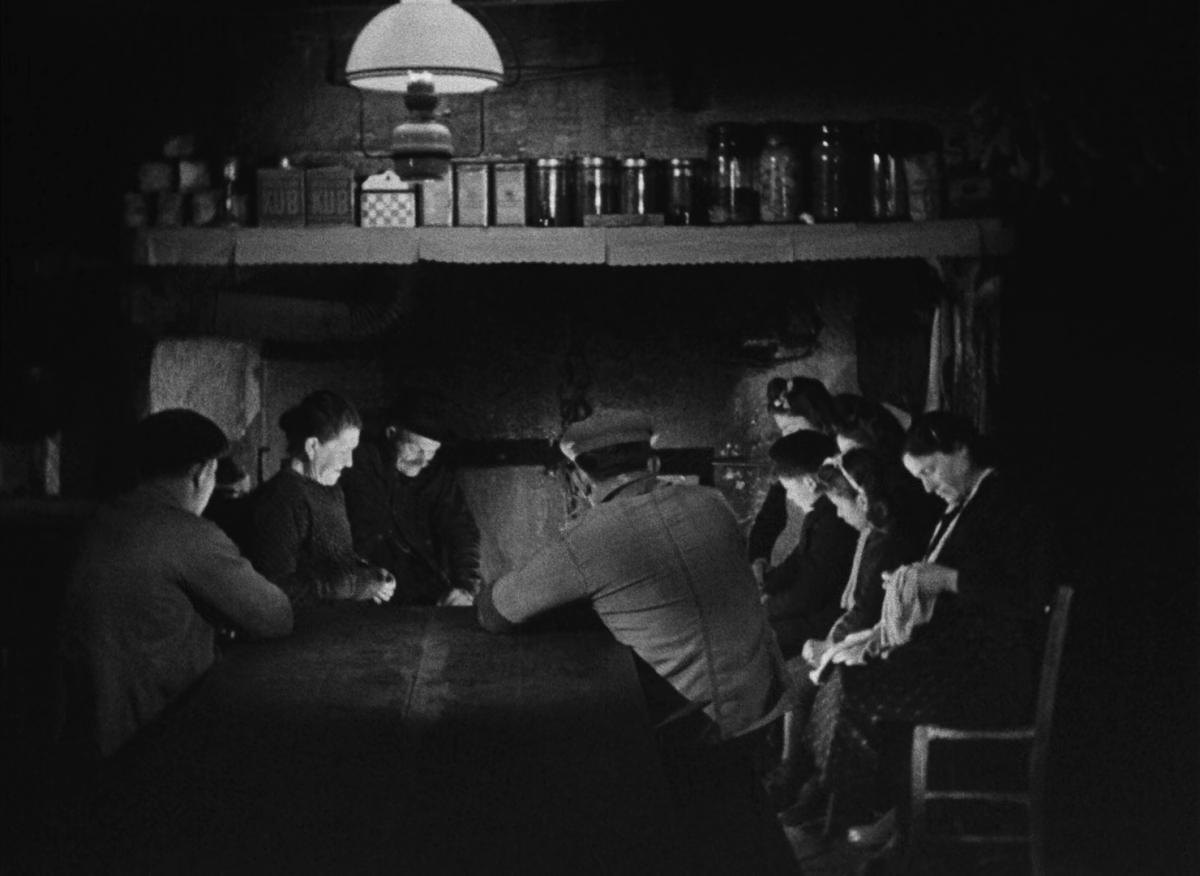
Interview conducted in 1984–85.
This text appeared originally in Images Documentaires 64, third and fourth trimester 2008.
With thanks to François Porcile and Catherine Blangonnet-Auer.
Milestones: Farrebique ou les quatre saisons takes place on Thursday 18 February 2021 at 19:30 on Sabzian. You can find more information on the event here.

